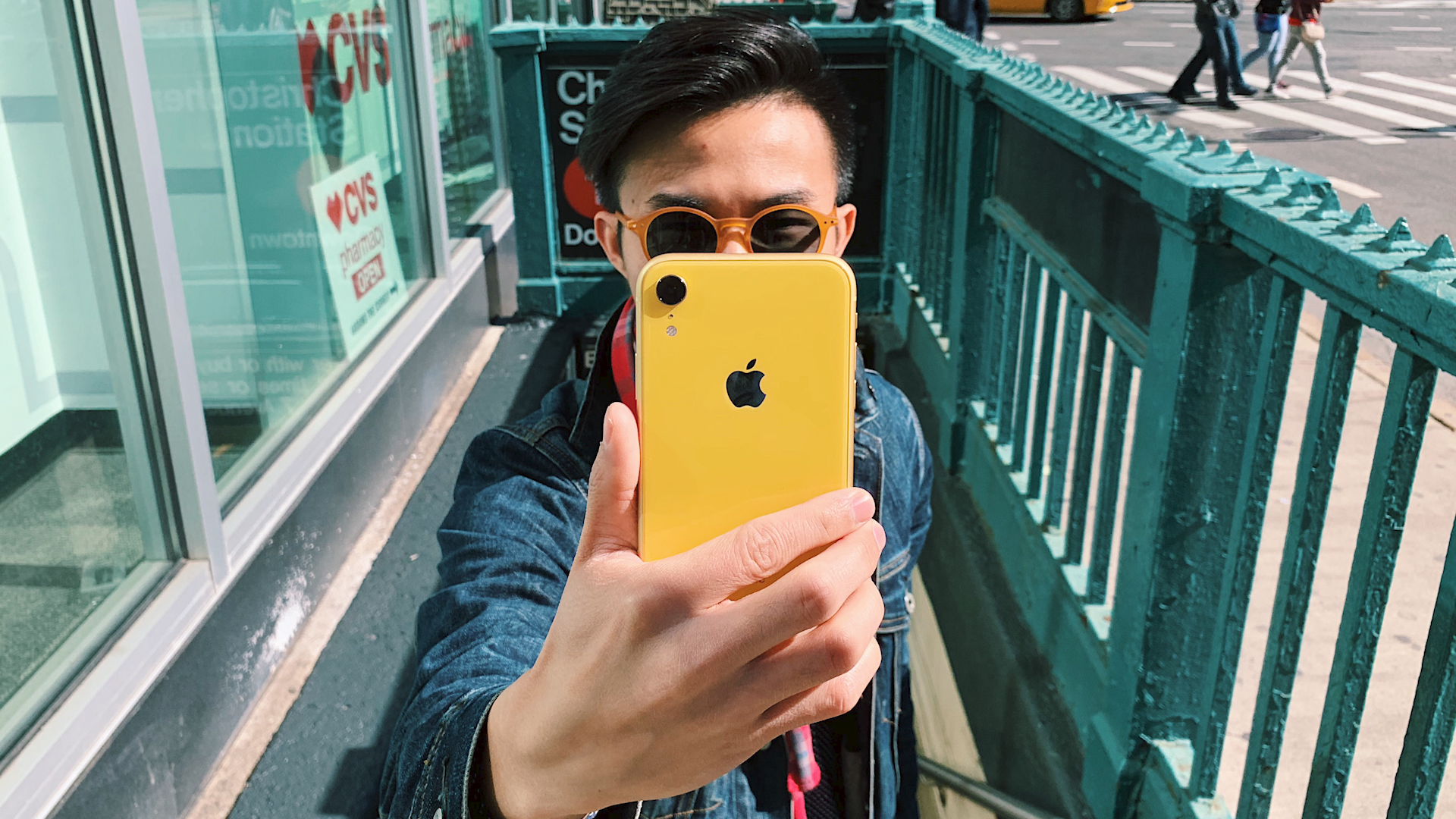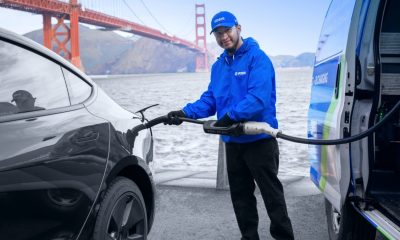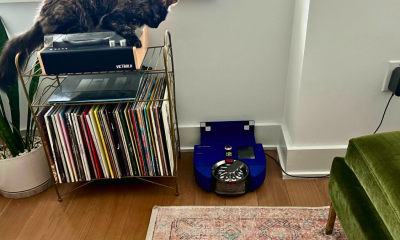Technology
The best laptop of 2018

Really crisp • bright and responsive touchscreen • Best-in-class keyboard and trackpad • Terrific battery life • Way faster performance compared to old version • Comes in matte black!
Still no USB-C port • Requires proprietary charging connector • Fabric interior can get gross
Microsoft’s Surface Laptop 2 has it all, including a great keyboard, high-res touchscreen, more powerful performance, and battery that’ll last all day.
Oh, how the tides have turned.
For the last 10 years, I’ve always recommended Apple’s MacBooks to anyone who’s asked me which laptop they should buy. Different operating system preferences aside, Apple’s MacBook Air and MacBook Pros — despite the premium cost — always offered a better experience.
The laptops were built to last, usually had much longer battery life (especially the Air), and made you one of the cool hipsters at the coffee shop.
Apple’s latest MacBook Pros are still good, but they’re considerably flawed. Notably, the flat keyboards (even with their quieter, third-generation “butterfly switch” keys) and Touch Bar remain the biggest letdowns.
Apple’s fumbling with its MacBooks, however, is an opportunity for manufacturers on the Windows side to step up. But it’s not your usual Dell, HP, or Asus who are making the best laptops that balance design, performance, and usability. Instead, my two favorite laptops of the year are coming from relative newcomers.
Dollar for dollar, Huawei’s MateBook X Pro remains one of my favorite laptops of the year and one of the best values for a clamshell computer if you’re can splurge $1,500 for the version with a 512GB SSD and discrete NVIDIA graphics.
But if that’s punching a bit above your budget, Microsoft’s Surface Laptop 2, which starts at $999, is my pick for best laptop of the year.
Hardware-wise, it’s the same great laptop (ports and all, for better or worse) as the original Surface Laptop. The biggest upgrade is internal: stepping up to 8th-generation Intel Core processors means up to 85 percent faster performance, according to Microsoft.
If you want a $999 MacBook the only option today is the MacBook Air. You can get by on the Air, but its specs are so outdated I can’t in good faith recommend anyone buy it. Especially not when it’s rumored Apple might be close to announcing a new 13-inch MacBook with updated processors and a sharper Retina display.
Do a quick search online and you can find laptops for the same price, but their specs kinda stink compared to the Surface Laptop 2.
Looking at the whole package, the Laptop 2 comes with an Intel 8th-gen Core i5 processor, 8GB of RAM, and 128GB of storage. Other $999 laptops usually come with slower processors, less RAM, or less storage — all of which will feel inadequate further down the road of ownership.
I reviewed a $1,299 model with 256GB of SSD storage and matte black finish. Doubling the internal storage costs an extra $200, but it’s worth doing so since you can’t add more later. It’s also the least expensive way to get the matte black version.
Microsoft sells other configurations with a faster Core i7 processor, 8GB of RAM, 256GB SSD for $1,599; a Core i7 chip, 16GB of RAM, 512GB SSD for $2,199; and a Core i7, 16GB of RAM, 1TB SSD for $2,699 (oddly enough this top-of-the-line model isn’t available in matte black).
The sweet spot is the model I tested and the one the one with the best bang for buck.
Performance for the future

The Surface Laptop has a big, bright 13.5-inch touchscreen.
Image: RAYMOND WONG/MASHABLE
Besides being a fantastic value, the Laptop 2’s most important change is performance. Microsoft says the Laptop 2 is “up to 85 percent faster” than the previous Surface Laptop. And their claims check out.
To test the Laptop 2’s power, I ran Geekbench 4 to benchmark both the CPU and the GPU performance.
For the CPU test, the Laptop 2 scored 3,872 on the single-core and 13,120 on multi-core. In comparison, last year’s Laptop with the previous-gen Core i5 model and 8GB of RAM configuration scored 3,615 on single-core and 7,492 on multi-core. That makes the Laptop 7.11 percent faster on single-core operations and 75.12 percent faster on multi-core operations.
It’s no surprise the Laptop 2 is faster since its processor has four cores compared to the Laptop’s dual cores. Apps that take advantage of multiple cores, like Photoshop and Adobe Premiere Pro CC, will benefit the most from the extra processing power.

In certain light, the matte black Laptop 2 looks kinda silver.
Image: RAYMOND WONG/MASHABLE
Graphics performance on the Laptop 2 is also significantly faster compared to the Laptop. Despite having Intel UHD 620 integrated graphics, which is the same integrated graphics as the Intel HD 620 in the Laptop (Intel just rebadged the graphics), my Geekbench 4 GPU test revealed my Laptop 2 was 63.3 percent faster on OpenCL operations (used for tasks like image processing) compared to the Laptop.
The speedier GPU is great, but don’t expect to do any gaming on the Laptop 2. It’s not equipped for such graphics-intensive tasks. Even on lower graphics settings, Fortnite is unplayable. Get a Razer Blade or Acer Predator with a more powerful discrete GPU for that.
Most people typically replace their laptops every 4-5 years. I feel confident the Laptop 2 will hold up until at least year three or four before it starts to choke up as Windows 10 is updated and perhaps your computing needs become more demanding.
Speaking of Windows 10, the Laptop 2 (thankfully) doesn’t ship with the Windows 10 S mode that the original Laptop did. Out of the box, you get Windows 10 Home and not the locked-down 10 S mode, which only lets you install apps from the Windows Store.
S mode is useful if you’re maybe a parent and want to have more control over what apps your kids use on their computer, but it’s useless you need to use apps like Chrome or Adobe’s Creative Cloud suite. As clean and speedy as Microsoft’s Edge browser is, as a professional, I need Chrome to do my job. So it’s great to see S mode tossed out for Windows 10 Home.
Same great design, but still no USB-C
Value and performance are really the only two things you need to know about the Laptop 2. Everything else is the same.
The Laptop 2’s design is identical to its predecessor. The wedge-shaped aluminum construction is sturdy and doesn’t flex. If you’ve gone into a Microsoft store and seen the original Laptop, you’ll know exactly what you’re getting.

The keyboard is one the comfiest on a laptop. The felt cover is… alright.
Image: RAYMOND WONG/MASHABLE
The keyboard is the same, with chiclet-style keys that have a good amount of travel. Typing on them is a comfier than the flatter keys on the new MacBooks for sure. And there’s a proper row of function keys above the number keys.
Complementing the keyboard is the precision trackpad. In my opinion, it’s the best trackpad on any Windows laptop (and I’ve used way too many premium laptops with crappy ones) with a responsiveness second to a MacBook’s.

Touchscreens are great on laptops and anyone who says otherwise is wrong.
Image: RAYMOND WONG/MASHABLE
The 13.5-inch touchscreen is also just as gorgeous as the old version. Microsoft says it has an even better 1,500:1 contrast ratio. Having toured their Surface device labs and seen all the machinery they use to stress-test their devices, I’ll take their word for it. To my eyes, the screen’s just really bright and really sharp and I rarely had to crank it to 100 percent brightness (I left it at 75 percent and it was more than visible indoors).
I’m not even too bothered that Microsoft kept the same ports (USB 3.0, Mini DisplayPort, headphone jack, and the Surface connector for charging and connecting to docks), though it would have been nice to see at least one USB-C port.
Microsoft’s Chief Product Officer’s Panos Panay’s explanation for the lack of USB-C on the Laptop 2 (and Surface Pro 6) is honest and direct: “It’s not ready.” And he’s not wrong. Even though it’s been years since USB-C launched, the unfortunate reality is that USB-A (that’s the regular full-size USB port if you’re not versed in your USB alphabet) is still more widely available. That applies to accessories and charging ports in places like airports and trains.

No USB-C port… again.
Image: RAYMOND WONG/MASHABLE
That said, it’s somewhat inexcusable to not include USB-C in the Laptop 2. Apple caught flak for ditching every port on its MacBooks for USB-C, but that act of “courage” if you will, has greatly helped accelerate USB-C’s ubiquity. With Microsoft’s Surface device revenue continuing to grow (it grew 14 percent year-over-year in its fiscal quarter for Q1 2019), the company has a responsibility to help speed up USB-C adoption. The sooner we get past the awkward transitional switching from USB-A to USB-C the sooner we can live in the utopian world where one port rules them all. Not including USB-C only delays the inevitable.

The Microsoft Connect port for charging is versatile for charging and connecting the Microsoft Dock.
Image: RAYMOND WONG/MASHABLE
I want to also complain about the proprietary Surface Connect port, which could have been replaced with USB-C for charging if Microsoft had included it, but I understand why it’s still on the Laptop 2. One, it’s magnetic and awesome just like MagSafe was (RIP) on MacBooks and so if you trip on the cable you won’t risk dragging it along with you. Two, the Connect port is useful if you want to dock it into a Surface Dock (sold separately). And three, the power brick comes with a USB-A port for you to charge up another device like your phone or tablet. I guess the Connect port isn’t so bad then.
Best laptop of the year

Sorry Apple, but Microsoft now makes the best laptop in this class.
Image: RAYMOND WONG/MASHABLE
I’ve tested a bunch of laptops this year, running the spectrum of 2-in-1s, Chromebooks, MacBooks, gaming laptops, etc. Everyone’s needs are going to be different, which is why there’s no such thing as a one-size-fits-all for laptops.
But enthusiasts laptops aside, I strongly feel the Surface Laptop 2 is the best laptop of the year. And by that I mean the best laptop for most folks’ needs.
The Surface Laptop 2 is beautiful and really well-built, especially the matte black version. But be warned: Like all colored aluminum, the coating will chip or scratch over time and expose the silver aluminum underneath.
It’s nothing to get overly worried about (my unit already has a few light silver scratches), but if you’re thinking of keeping it pristine, you might want to consider applying a skin to it for a little added protection.
It has a keyboard that doesn’t break if you get cheese doodle dust inside of the keys. And of course it’s a great typing experience with keys that have good travel. The trackpad is also excellent. The touchscreen is brilliant corner to corner. It has a USB-A port!
It’s got a keyboard that doesn’t break if you get cheese doodle dust inside of the keys.
Battery life is also one of the Laptop 2’s strengths. Microsoft claims up to 14.5 hours of battery life for local video playback just like on the first Laptop, but real battery life on a single charge for mixed usage such having lots of Chrome tabs, streaming Spotify and YouTube videos, and writing a couple of documents (like this review) in Google Docs will get you between 5-7 hours, As always, how long the battery lasts also depends on things like your display brightness setting, whether you’re on WiFi or not, and what kinds of apps you’re running.
And it comes with Windows 10 Home and features faster and smoother performance. The cherry on top is the pricing. It’s a better deal than Apple’s $1,299 MacBook Pro and I like it more than and similarly spec’d Dell XPS 13.
The only laptop I think that also checks off all the boxes in a similarly thin and light form factor is Huawei’s MateBook X Pro, but again, as I said earlier, the best option for that is the $1,500 model.
Last year Microsoft offered the Surface Laptop starting at $999 with a measly 4GB of RAM (an option nobody should even consider in 2018), but with Surface Laptop 2, it’s doubled it, making even the entry-level computer a good machine if you can get by with less storage.
It feels like I’m in Bizarro World that Apple no longer makes the best laptop for most people, but Microsoft does. But hey, that’s what happens when you focus on getting all the core laptop features right instead of chasing thinness and lightness.

!function(f,b,e,v,n,t,s){if(f.fbq)return;n=f.fbq=function(){n.callMethod?
n.callMethod.apply(n,arguments):n.queue.push(arguments)};if(!f._fbq)f._fbq=n;
n.push=n;n.loaded=!0;n.version=’2.0′;n.queue=[];t=b.createElement(e);t.async=!0;
t.src=v;s=b.getElementsByTagName(e)[0];s.parentNode.insertBefore(t,s)}(window,
document,’script’,’https://connect.facebook.net/en_US/fbevents.js’);
fbq(‘init’, ‘1453039084979896’);
if (window.mashKit) {
mashKit.gdpr.trackerFactory(function() {
fbq(‘track’, “PageView”);
}).render();
}
-

 Business4 days ago
Business4 days agoAPI startup Noname Security nears $500M deal to sell itself to Akamai
-

 Business6 days ago
Business6 days agoYoshi Mobility has come a long way since gassing up cars on the side of the road
-

 Entertainment4 days ago
Entertainment4 days agoHow to watch ‘Argylle’: When and where is it streaming?
-

 Entertainment4 days ago
Entertainment4 days agoNASA discovered bacteria that wouldn’t die. Now it’s boosting sunscreen.
-

 Business4 days ago
Business4 days agoUS think tank Heritage Foundation hit by cyberattack
-

 Entertainment4 days ago
Entertainment4 days agoDyson 360 Vis Nav robot vacuum review: Dyson should just stick to upright vacuums
-

 Business3 days ago
Business3 days agoTesla drops prices, Meta confirms Llama 3 release, and Apple allows emulators in the App Store
-

 Entertainment4 days ago
Entertainment4 days agoCrypto and taxes: Which forms you need to file



















